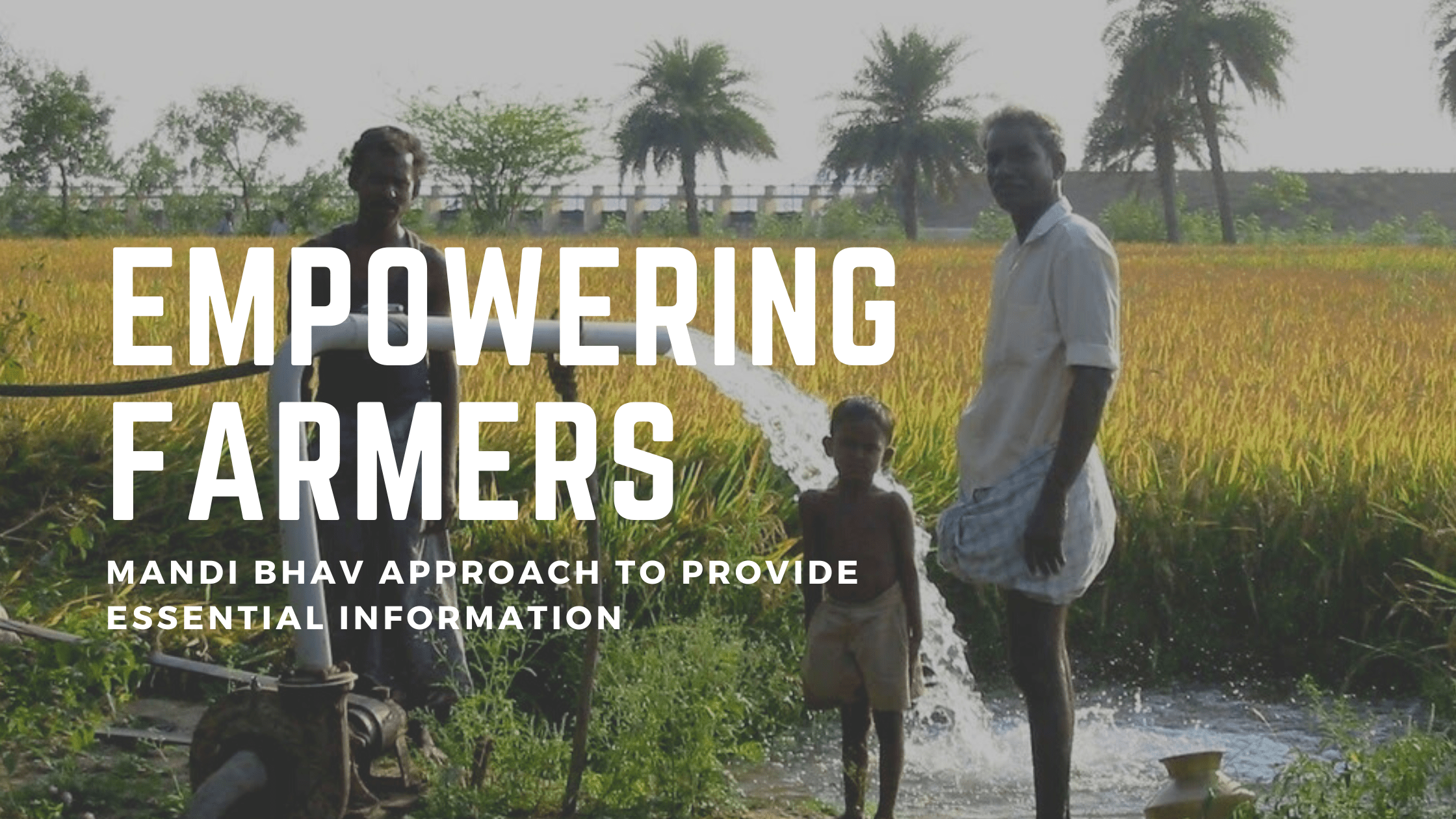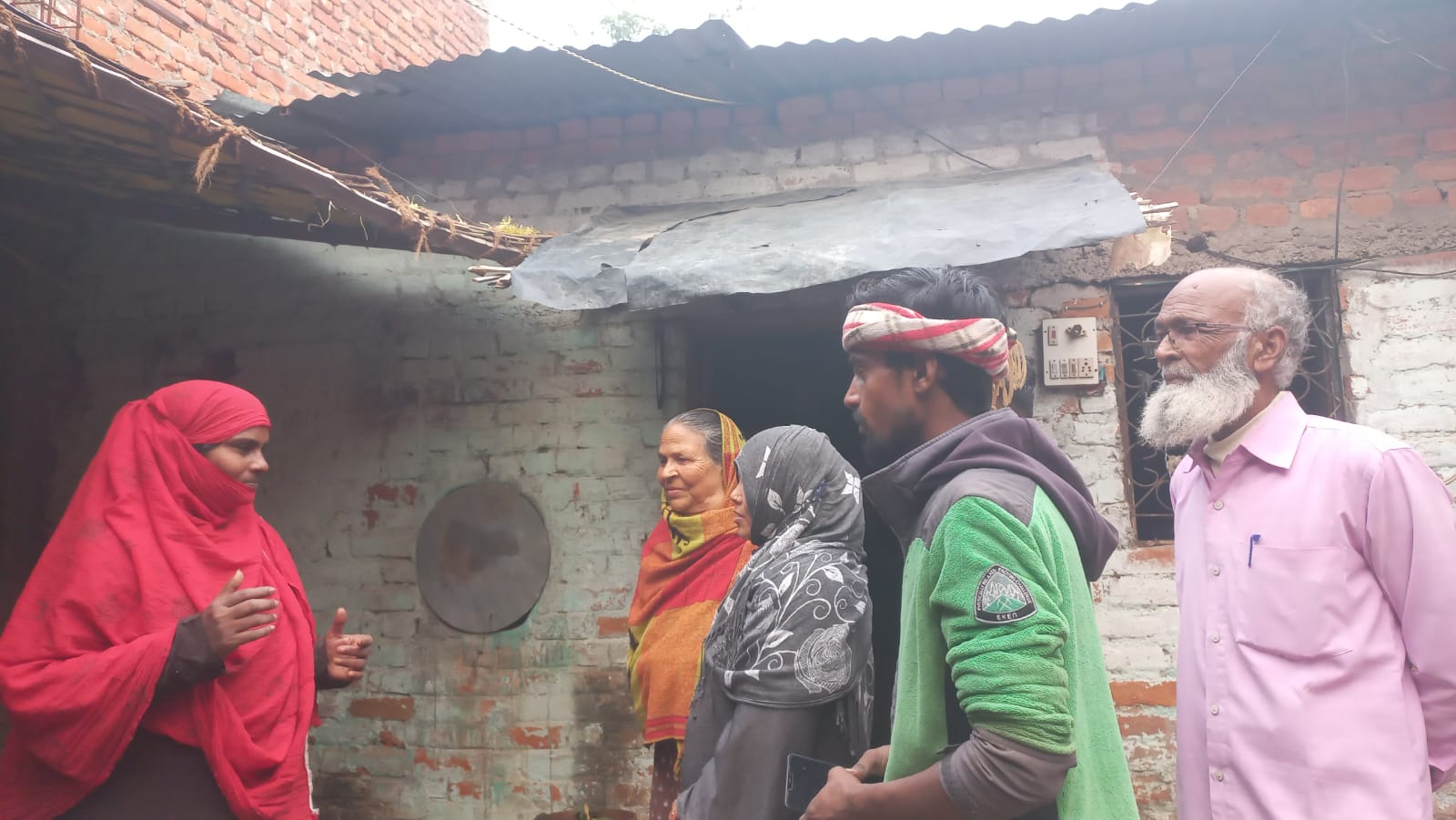Farmers often don’t get fair prices for the farm produce. The challenges faced by farmers in obtaining fair prices for their produce are indeed multifaceted, and the lack of awareness of current market prices is a significant factor. Since the prices of the farm produce is a volatile metric, the fluctuations are very frequent, so keeping track of the updated prices can be challenging for the farmers. Here are some key aspects contributing to this issue:
- Limited Access to Information: Many farmers, especially in rural areas, may not have easy access to information about current market prices. Lack of internet connectivity, information dissemination infrastructure, and educational resources can hinder their ability to stay informed.
- Market Inefficiencies: Agricultural markets can be inefficient and lack transparency. In some cases, middlemen or intermediaries may exploit information asymmetry to offer lower prices to farmers. Streamlining and improving market structures can help ensure a fairer distribution of profits.
- Volatility in Prices: Agricultural commodity prices are often influenced by various factors, including weather conditions, global demand, and geopolitical events. The volatility makes it challenging for farmers to predict and plan for market changes effectively.
- Limited Market Access: Some farmers may have limited access to broader markets due to geographical constraints or lack of transportation infrastructure. This limitation reduces their ability to explore alternative markets and obtain better prices for their produce.
- Technology Divide: The digital divide in rural areas can impede the adoption of technologies that provide real-time market information. Mobile applications, online platforms, and other technological solutions can play a crucial role in bridging this gap and empowering farmers with up-to-date pricing information.
By addressing these issues holistically, it is possible to empower farmers with the knowledge and tools needed to navigate the complexities of agricultural markets and obtain fair prices for their produce.
Gram Vaani’s Mandi Bhav intervention is one step in this direction.
Leveraging Mobile Vaani Network (MVN):
The Mobile Vaani network mission is to challenge socio-economic ideologies and norms that are responsible for the reproduction of all forms of inequality, by providing a community media technology platform that enables inclusive conversation spaces, along with services or guidance on the operation of the platform, to achieve the goal.

- Presence in 20+ states (Direct and via partners)
- More than 100 thousand unique users per month
- More than 10,000 calls on IVR per day
- More than 200 B2B partners
- 12000+ impact stories
- 800K+ voice reports recorded (user voices on MV network/platforms)
Considering a wide presence of Mobile Vaani network across the country, this network could be leveraged to spread awareness and bring farmers onboard.
Program Details:
Volunteer’s journey:
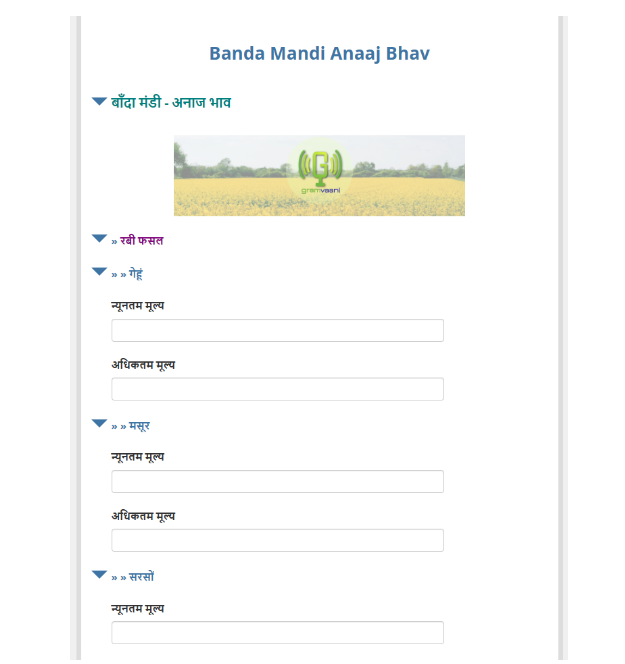
- Reporters are given access to an ODK Form (please refer to the template above)
- These forms are filled by reporter basis the following:
- Depending on the season, the reporter chooses Kharif or Rabi.
- The reporter enters Min and Max price of the crop
- All the prices are per quintal rate
- There are multiple such questions in which the reporter can choose the name of the produce and report its Mandi Bhav the respective mandi.
- Each form has following client side validations (just to avoid accidental incorrect entries):
- Only integer values can be entered
- No fractional values
- No special characters
- There cannot be Zero or negative value for any crop
- The max value cannot exceed 20000
- The max value should always be more than min value
- All such responses get logged in a ODK backend
Phase 1 (Pilot): Manual trigger
For the pilot phase of the program, Banda district in UP was chosen. The crop prices collected by the volunteer were pushed to the backend via ODK form. The SMS broadcast with crop prices was manually done to the farmer base of Banda.
Phase 2: Automated trigger
In Phase 2 of the program, MV’s engineering team automated the process by writing a script. The script was programmed to read the incoming ODK data, insert the values in the approved SMS template and trigger the SMS to the users.
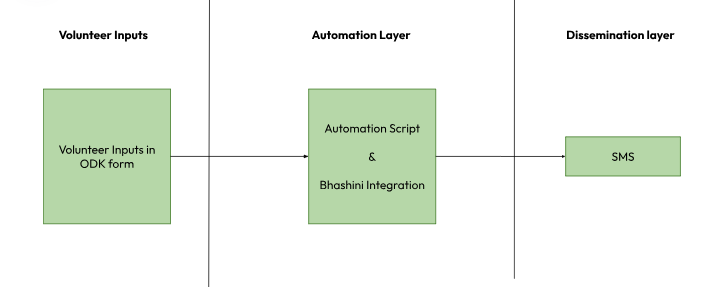
Farmer’s journey:
Opt in:
- Users will give a missed call to the MVN number of their district
- They will receive a callback confirming that their Mandi Bhav service is activated
- User will also receive an SMS confirming
- GV will store the opt-in the backend
Opt out:
- User will give a missed call on the same number which was used to opt-in
- IVR will the call back and asks user to confirm opt-out by pressing a DTMF key
- If the user presses the key, opt-out confirmation message will be played
- User will also receive an SMS confirming Opt-out
- GV removes the user’s number from the recipients

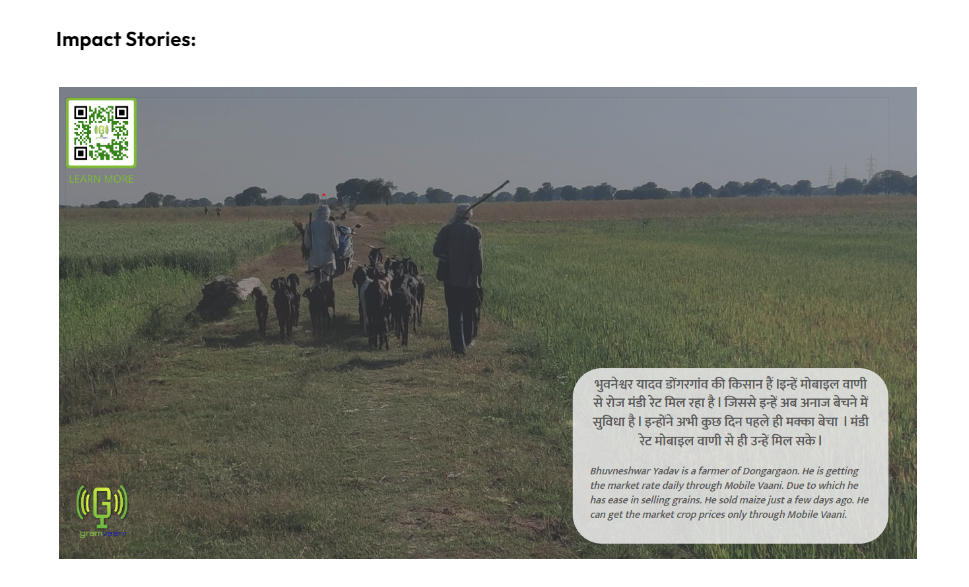
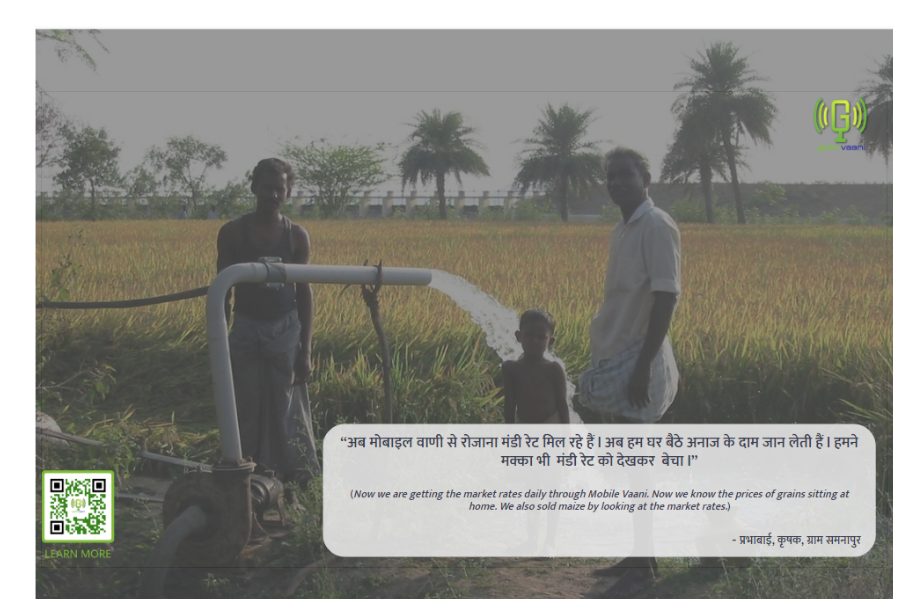
Future expansion:
Crop and Weather advisories
Weather and climate information plays a vital role in agricultural production and management. A weather advisory for farmers serves several important purposes, as agriculture is highly dependent on weather conditions. By providing timely and accurate weather information, advisories empower farmers to make informed decisions, mitigate risks, and enhance the overall productivity and sustainability of agriculture.
Mandi Bhav program shall be further expanded to include crop and weather advisory services for each district. This will help farmers in crop planning, financial management, risk management and community preparedness.
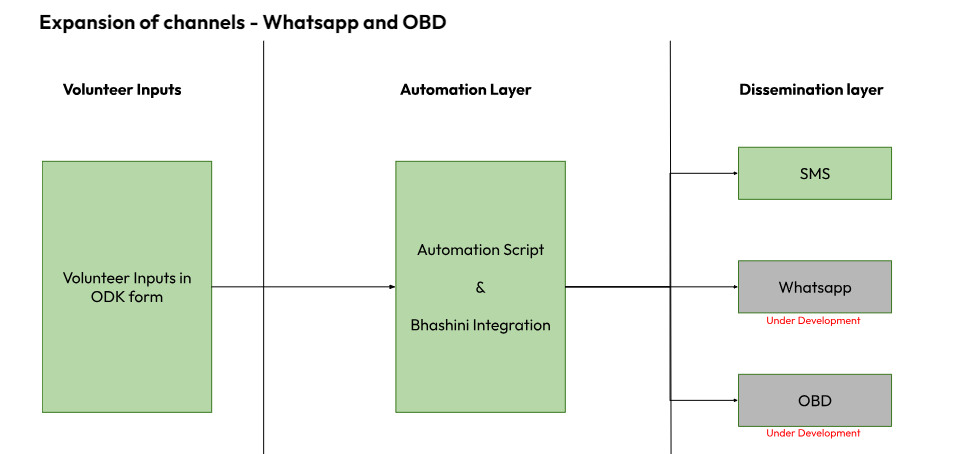
We also plan to leverage TTS capability using Bhashini. The speech recording obtained from Bhashini is pushed as OBD to the farmers. This opens up an additional channel for farmers through which the information shall be shared.
We are also working on pushing automated Whatsapp messages in the approved Whatsapp template. So, information dissemination can happen via WA also.


